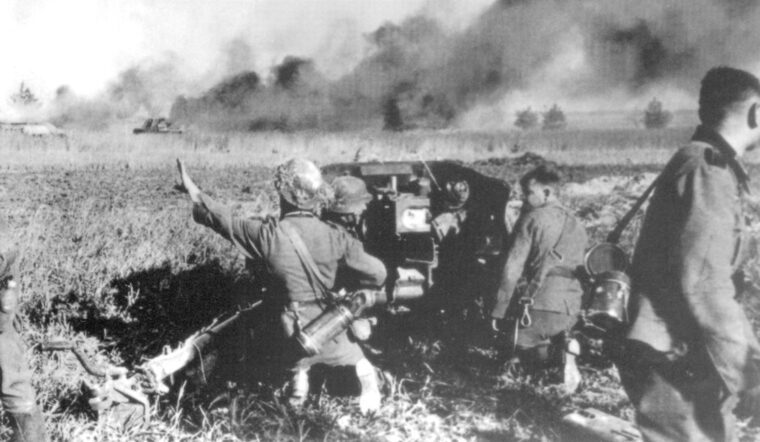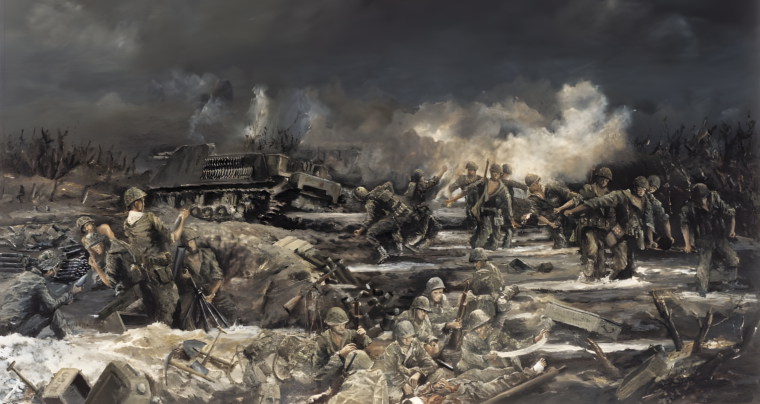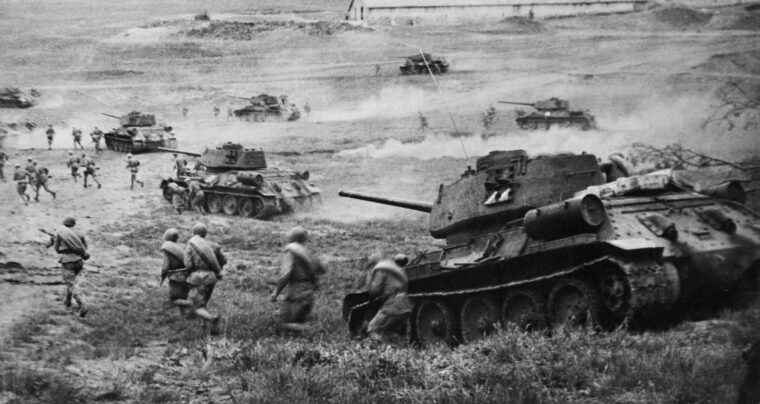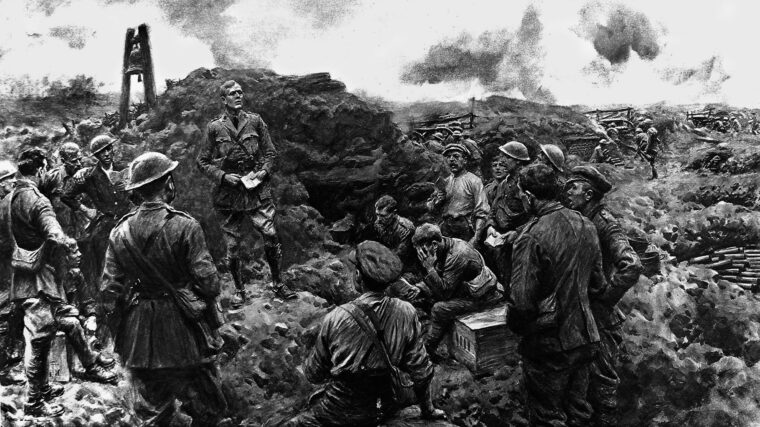
WWII
The Ill-Fated Goettge Patrol: Richard Tregaskis
by John WukovitsThe heated reaction by the Marines to the slaughter at the Goettge Patrol, answered in kind by the Japanese, led to some of the fiercest combat seen in the war. Read more


WWII
The heated reaction by the Marines to the slaughter at the Goettge Patrol, answered in kind by the Japanese, led to some of the fiercest combat seen in the war. Read more

WWII
When World War II in Europe came to an end, the Eighth Air Force was the most famous unit in the U.S. Read more

WWII
The American jeep holding the 3rd Belorussian Front Commander, General Ivan Danilovich Chernyakhovsky, drove quickly through the city of Mehlsack, just outside Königsberg. Read more

WWII
Although neither side was aware of it at the time, the battle for Okinawa would be the last major battle of World War II. Read more

WWII
In May 1941, General Kurt Student’s elite paratrooper forces descended like an anvil on the British garrison defending Crete. Read more

WWII
Between 1940 and 1945, the outstanding fighting spirit and courage of the elite German paratroop forces earned the admiration of friend and foe alike. Read more

WWII
The Germans knew the bombers were coming, and they prepared even as the U.S. 457th Bomber Group first assembled in the early morning sunlight over faraway London. Read more

WWII
A chill breeze cut through the early morning haze, and the storm-swollen sea was rough off the coast of northern France on Tuesday, June 6, 1944. Read more

WWII
The city of Ternopil, located on the eastern bank of the Seret River, was founded in 1540 as a Polish military stronghold. Read more

WWII
In the distance, they could see the jagged flashes of lightning, an incoming squall in the dark. Just before the rain arrived, so did St. Read more

WWII
The strategic defeats suffered in the Battles of the Coral Sea and Midway checked Japan’s advance in the Pacific. Read more

WWII
Gene Verge was born in Pasadena, California, in 1918. As a young man in 1941 he faced the probability of being drafted. Read more

WWII
Hitler was enraged as he stalked his way around the room during the waning months of World War II. Read more

WWII
After four months and a 600-mile advance from the beaches of Normandy into Brittany and then through eastern France, the spearhead of Lt. Read more

WWII
They carried no weapons, only holy books and rudimentary vestments, a crucifix or a Star of David and sometimes a little Communion kit. Read more

WWII
Thailand was perhaps the least known, though surely more scenic and exotic, covert battleground of World War II. Read more

WWII
Georgina’s mother sat next to me at her dining room table. She and her husband were veterans of the Great Patriotic War, and back in 1996 we all sat about the table on Victory Day and talked about the siege. Read more

WWII
As the landing craft carrying the invading Allied ground forces of Operation Overlord motored toward the Normandy beaches on June 6, 1944, they were protected and supported by the largest aerial armada the world has ever seen. Read more

WWII
When built, the French Surcouf was the largest submarine in the world. She was named for Robert Surcouf, the famed French privateer who waged successful economic warfare against England during the Napoleonic era. Read more

WWII
At 11:02 am on August 9, 1945, an American warplane dropped an atomic device nicknamed “Fat Man” onto the city of Nagasaki, Japan. Read more